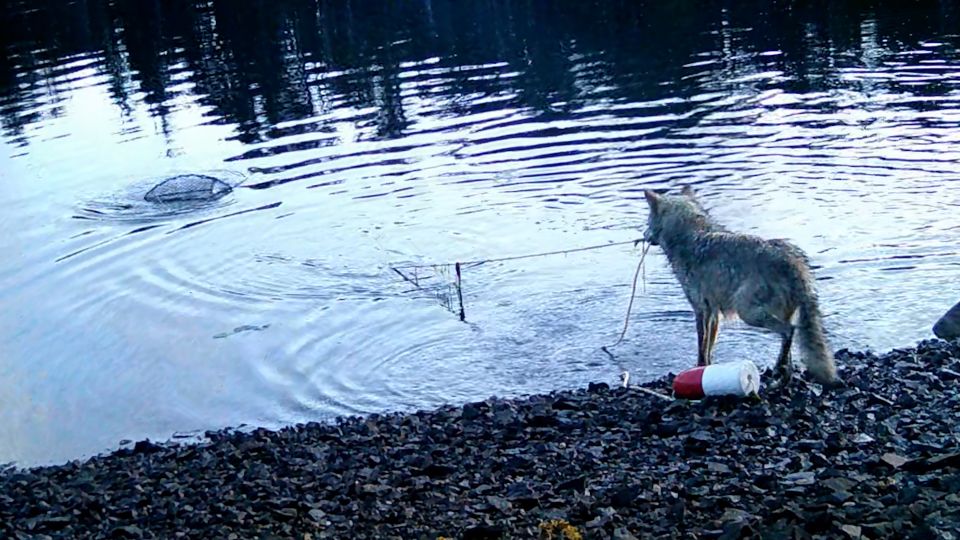Home / Science / Wolf filmed using tools to eat crab bait
Wolf filmed using tools to eat crab bait
25 Nov
Summary
- A wild wolf was filmed retrieving and opening a crab trap.
- The wolf's behavior might be the first documented tool use by a wolf.
- The discovery occurred in British Columbia, Canada, involving invasive species control.

In a groundbreaking observation on British Columbia's central coast, a wild wolf was filmed employing a sophisticated technique to access bait from a crab trap. The Heiltsuk Nation had set traps as part of an environmental stewardship effort against invasive European green crabs. Researchers, initially puzzled by damaged traps in deep water, deployed motion-triggered cameras, expecting to see other marine animals.
Instead, footage revealed a wolf swimming to retrieve a trap, pulling it ashore, and then opening a bait canister. This sequence of actions suggests advanced problem-solving and potential tool use, a behavior never before documented in wolves. Scientists are divided on whether this qualifies as tool use, as the wolf did not construct the trap but skillfully utilized it.
This discovery prompts further questions about wolf intelligence and the potential for learned behaviors to spread within wolf populations. The environment of the Heiltsuk territory, where wolves are not heavily persecuted, may foster such innovative actions. Regardless of the precise definition of tool use, the wolf's actions showcase remarkable cognitive abilities and offer a fascinating glimpse into the natural world.



